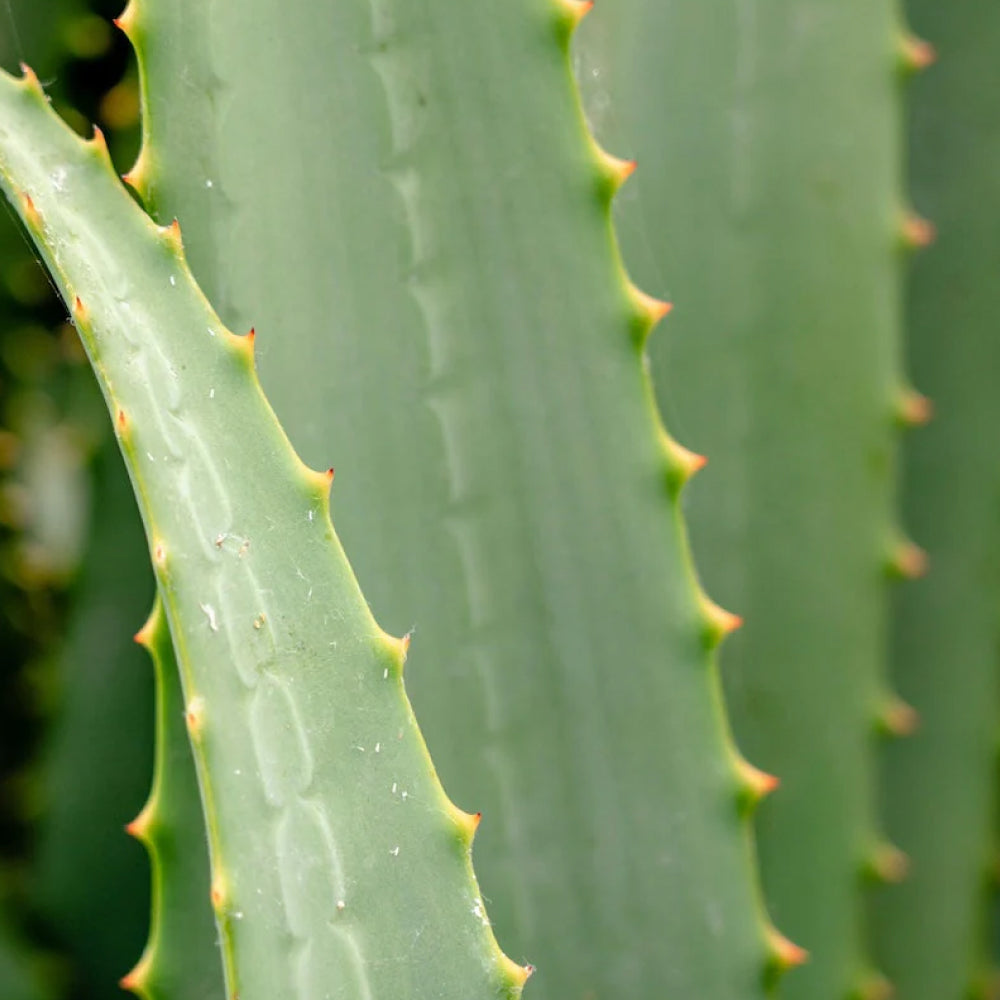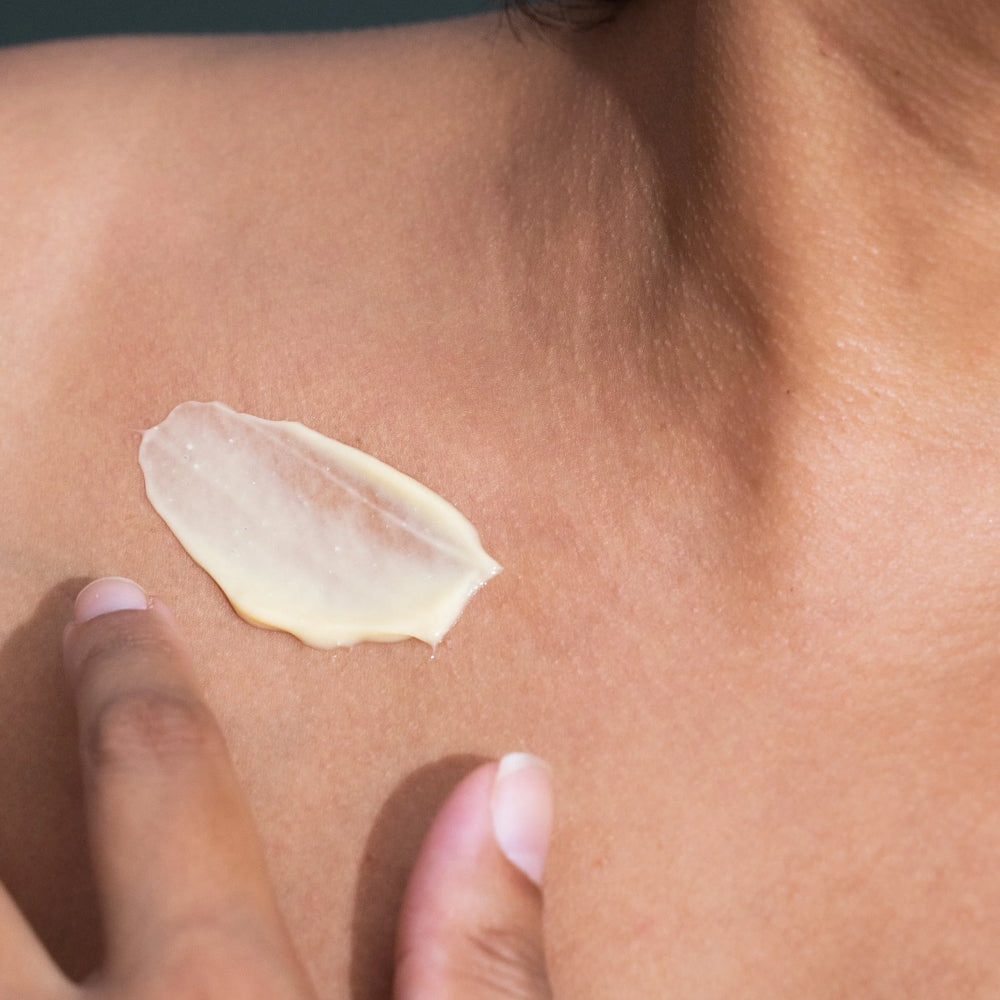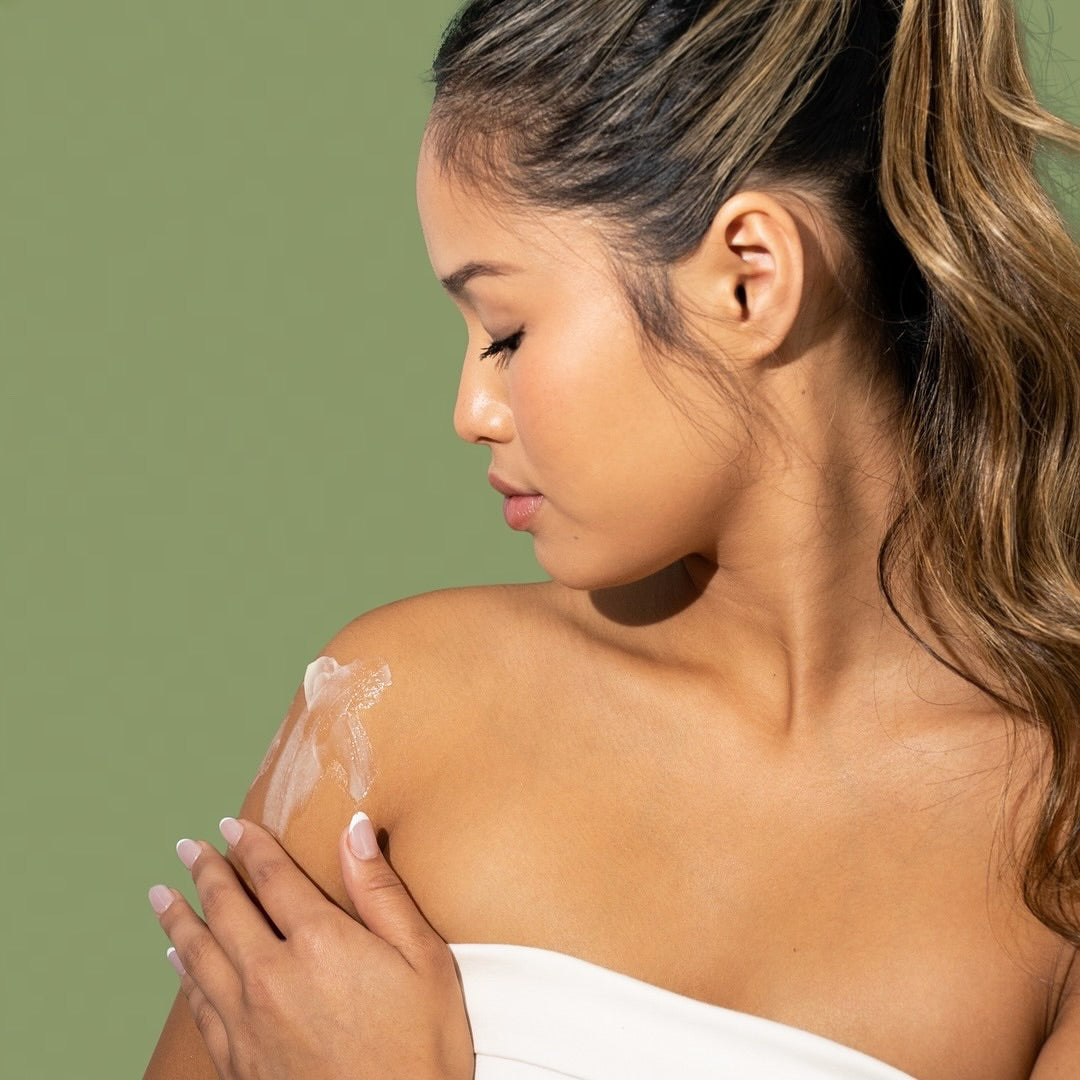Is your skin feeling dry and irritated? It could be a simple seasonal issue—or the potential signs of something more serious, like psoriasis. Don’t brush it off; you might put your skin at risk. In this blog, we’ll clarify dry skin vs psoriasis, helping you gain a deeper understanding and manage these symptoms effectively.
What is Dry Skin?
The National Institutes of Health (NIH) explains that dry skin is an uncomfortable condition caused by a lack of water in the skin's outer layer, the stratum corneum. Symptoms like scaling, itching, roughness, and cracking are the telltale signs.
But what causes it? According to Science Direct’s Dry Skin, excessive bathing, scrubbing, heat exposure, harsh soaps, detergents, aging, or certain medical conditions can strip the skin of moisture, leaving it dry and vulnerable.
What is Psoriasis?
According to the National Library of Medicine, psoriasis is a chronic skin condition characterized by erythematous plaques with silvery scales, commonly affecting the extensor surfaces, scalp, and lumbosacral region. Patients with psoriasis may experience pruritus and discomfort. In some cases, they may develop psoriatic arthritis, characterized by joint pain and swelling.
The exact cause of psoriasis remains unclear, though it is believed to involve a combination of genetic factors and environmental triggers. A 2021 study conducted by Raharja, Mahil, and Barker, published in Clinical Medicine, found that genetic factors contribute to 60%-90% of psoriasis cases. Environmental triggers such as stress, infections, and medications account for the remaining cases.
What’s the Difference Between Dry Skin vs Psoriasis?
Dry skin and psoriasis may appear similar initially, but key differences help identify and target appropriate care. “The most common type of psoriasis…is plaque psoriasis (which) causes dry, itchy, raised skin patches (plaques),” says UM Health-Sparrow in their online article on psoriasis. Here's a comparison of dry skin vs psoriasis:
|
Dry skin |
Psoriasis |
|
|
Skin appearance |
Appears flaky, rough, and dull; Edges are not well-defined. |
Thick, scaly patches; Edges are sharply defined, often reddish or silvery. |
|
Symptom location |
Anywhere |
More common on the scalp, lower back, knees, or elbows, and sometimes on the face. |
|
Duration and persistence |
Temporary and easy-to-treat; Needs proper moisturization. |
Long-term chronic; Requires ongoing treatment. |
When to Seek Professional Help
Whether you’re dealing with dry skin or psoriasis, specific symptoms warrant a consultation with a healthcare provider, including:
-
Symptoms persist despite using over-the-counter remedies or moisturizers;
-
Skin becomes painful, cracked, or starts bleeding;
-
Redness, infection, and swelling start developing around affected areas;
-
Face suffers from psoriasis outbreaks.
Common Psoriasis Treatments
Depending on your psoriasis severity, symptoms, and overall health, have a personalized treatment plan to help manage this chronic condition. Below are some expert tips from Penn Medicine Center.
-
Over-the-counter relief: Moisturizers and hydrocortisone creams can improve itchiness, prevent infection, and boost skin hydration. However, you need to have these choices under medical guidance.
-
Topicals: Prescriptions or ointments, including steroids, retinoids, and vitamin D analogs, directly heal affected areas to reduce inflammation.
-
Phototherapy: This uses UVB light to control some types of skin disorders, including psoriasis. Whether the condition is moderate or severe, this treatment must be under medical supervision.
-
Biologics: Professionals try to manage via injection or IV infusion to reduce the negative impacts of proteins in the immune system that cause inflammation.
-
Systemics: These are oral medications like cyclosporine or methotrexate to control the immune response and extensive inflammation with widespread symptoms.
Preventive Measures for Dry Skin vs Psoriasis
Below are some skincare tips to manage dry skin vs psoriasis symptoms. Dry skin calls for simple, adequate hydration to restore balance, while psoriasis requires a more strategic focus on calming inflammation or avoiding triggers.
Tips for Preventing Dry Skin
The American Academy of Dermatology (AAD) has specific clinical recommendations to help heal dry skin and prevent its returns:
-
Take 10-minute showers and baths with lukewarm water
-
Immediately use rich, healthy moisturizers after washing and bathing
-
Avoid using lotions; instead, opt for creams or ointments with one or more ingredients like jojoba oil, dimethicone, glycerin, lactic acid, and hyaluronic acid
-
Use fragrance-free skin care products like Active ReLeaf Spot Gel to minimize irritation and dryness without allergic reactions
-
Try to wear lip balm on your lips and use hypoallergenic laundry detergent
Tips for Managing Psoriasis
Taking good care of your skin can improve psoriasis symptoms. Once again, the AAD’s dermatologists provide essential tips for your skin health:
-
Avoid skin injuries such as cuts, scrapes, and insect bites, as they can trigger new lesions
-
Don’t get a sunburn and scratches
-
Have a healthy, ingredient-balanced diet
-
Don’t wear heavy fabric clothing
-
Soothe irritation with healthy, clinic-certified products
-
Reduce stress by balancing lifestyle or using supplements like Liverty Dynamic Drops—a specific formulation to boost liver and skin health, helping calm the mind effectively
In case you're looking for a more holistic approach, consider our Dynamic ReLeaf Duo. This duo is made from healthy, natural ingredients that promote relaxation and skin recovery at once.
How Phoilex Helps Your Dry Skin or Psoriasis
Our blog has clarified the differences between dry skin and psoriasis. From here, you can understand their typical symptoms and causes, appropriate treatment to address your skin’s needs, and choose the proper treatment.
Phoilex is here to deliver good skin health care with a touch of nature’s brilliance. Each product can effectively offer targeted relief:
-
Active ReLeaf Spot Gel: includes a unique formulation named Phyto-Active Blend™, which helps soothe and hydrate the affected skin. In addition, ceramide complex and vitamin D3 work well to promote skin health and vitality.
- Liverty Dynamic Drops: is an oral tincture that supports skin health from within. It features a powerful blend of botanically derived ingredients designed to support liver health and help promote skin renewal.
-
Dynamic ReLeaf Duo: includes the Active ReLeaf Spot Gel and Liverty Dynamic Drops, offering a holistic approach to support clearer skin and emotional well-being.
With botanically-derived formulas, these products can better soothe irritation, reduce stress, and heal skin without side effects.
FAQs:
Q: Can dry skin turn into psoriasis if left untreated?
A: No, dry skin cannot turn into psoriasis as they are fundamentally different conditions. Dry skin is a temporary condition caused by lack of moisture in the skin's outer layer, while psoriasis is a chronic autoimmune condition with genetic factors contributing to 60%-90% of cases. However, untreated dry skin can become more uncomfortable and lead to cracking or irritation.
Q: How can I tell if my scaly patches are psoriasis or just severe dry skin?
A: Psoriasis typically presents with thick, raised patches that have sharply defined edges and often appear reddish or silvery, while dry skin has flaky, rough patches with poorly defined edges. Psoriasis plaques are usually thicker and more persistent than dry skin, and they commonly appear on specific areas like elbows, knees, scalp, and lower back. If you're unsure, consult a dermatologist for proper diagnosis.
Q: What environmental triggers can cause psoriasis flare-ups?
A: According to research, environmental factors account for a significant portion of psoriasis cases and include stress, infections, and certain medications. Other triggers can include skin injuries, cold weather, smoking, and alcohol consumption. Identifying and avoiding your personal triggers can help manage psoriasis symptoms more effectively.
Q: Can moisturizers help both dry skin and psoriasis?
A: Yes, moisturizers are beneficial for both conditions but serve different purposes. For dry skin, regular moisturizing can often resolve the issue by restoring the skin's moisture barrier. For psoriasis, while moisturizers help reduce scaling and discomfort, they work best as part of a comprehensive treatment plan that may include medicated creams or other therapies prescribed by a dermatologist.
Q: Is psoriasis only a skin condition or does it affect other parts of the body?
A: Psoriasis is not just a skin condition—it's a systemic disease that can affect multiple body systems. Some patients develop psoriatic arthritis, which causes joint pain and swelling in addition to skin symptoms. This is why proper diagnosis and treatment are crucial for managing both the visible skin symptoms and potential internal complications.
Q: Why does dry skin get worse in winter months?
A: Dry skin often worsens in winter due to low humidity levels, cold temperatures, and indoor heating that strips moisture from the air and skin. Excessive bathing with hot water, harsh soaps, and reduced natural oil production in cold weather further contribute to moisture loss. Using a humidifier and switching to gentler cleansers can help combat seasonal dryness.
Q: How quickly can I expect dry skin to improve compared to psoriasis?
A: Dry skin typically responds quickly to treatment, often showing improvement within days to a week of consistent moisturizing and proper skin care. Psoriasis, being a chronic condition, requires longer-term management and may take weeks to months to see significant improvement with treatment. Psoriasis symptoms may also cycle through periods of flare-ups and remission throughout a person's lifetime.
References:
-
Proksch, E., Berardesca, E., Misery, L., Engblom, J., & Bouwstra, J. (2020). Dry skin management: practical approach in light of latest research on skin structure and function. The Journal of Dermatological Treatment, 31(7), 716–722. https://www.tandfonline.com/doi/full/10.1080/09546634.2019.1607024
-
Lussier, D., Bruneau, M.-A., & Villalpando, J. M. (2011). Management of End-Stage Dementia. Primary Care: Clinics in Office Practice, 38(2), 247–264. https://www.sciencedirect.com/science/article/abs/pii/S0095454311000194
-
Nair, P. A., & Badri, T. (2023, April 3). Psoriasis. StatPearls Publishing. https://www.ncbi.nlm.nih.gov/books/NBK448194/
-
Psoriasis. (2024). University of Michigan Sparrow. https://www.uofmhealthsparrow.org/departments-conditions/conditions/psoriasis
-
Eczema vs. Psoriasis: Similarities, Contrasts and Treatment. (2022). Pennmedicine.org. https://www.pennmedicine.org/updates/blogs/health-and-wellness/2022/march/psoriasis#
-
Dermatologists’ top tips for relieving dry skin. (n.d.). Www.aad.org. https://www.aad.org/public/everyday-care/skin-care-basics/dry/dermatologists-tips-relieve-dry-skin
-
Psoriasis: Tips for managing. (n.d.). Www.aad.org. https://www.aad.org/public/diseases/psoriasis/insider/tips
-
Raharja, A., Mahil, S. K., & Barker, J. N. (2021). Psoriasis: a brief overview. Clinical Medicine (London, England), 21(3), 170–173. https://www.sciencedirect.com/science/article/pii/S1470211824031270
Read more

If you have ever suffered from redness, irritation, and pain due to perioral dermatitis, you know how awful it can get. This condition can usually be triggered by external environmental factors, a ...

Eczema, a chronic skin condition, is often triggered by allergic reactions or environmental irritants, leading to dryness, irritation, itching, and inflammation of the affected areas. Eczema-prone ...
